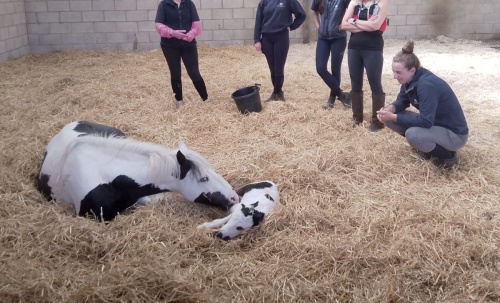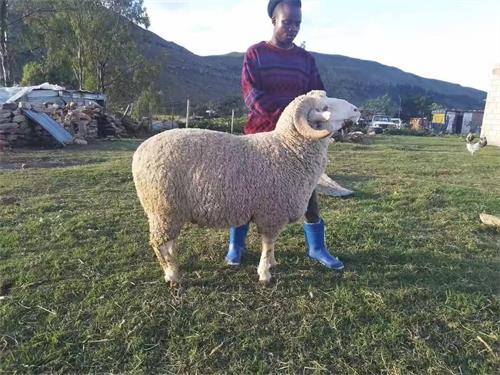Postpartum Recovery Trends in Horses Previously Pregnant with Twins
Understanding postpartum recovery in mares is essential for breeders, veterinarians, and equine caretakers, especially in cases where the mare was pregnant with twins. While twinning in horses is relatively rare—occurring in about 1–2% of pregnancies—it presents significant risks both to the foals and the dam. Most twin pregnancies result in abortion or the loss of one or both fetuses, and the recovery journey for the mare can be more complex compared to single pregnancies.

This article explores the biological, physiological, and management aspects of postpartum recovery in mares that carried twins, drawing from veterinary literature and international experiences. Our aim is to provide a reader-friendly, well-rounded view of how twinning affects the mare’s postpartum period and what caretakers can do to support optimal recovery.
The Unique Challenges of Twin Pregnancies in Horses
Mares are not naturally designed to carry twins to term. The equine uterus, with its relatively limited capacity and placental surface area, struggles to support two viable fetuses. Even when twin pregnancies are diagnosed and managed early—typically by reducing one embryo—some mares still go on to carry both. In such cases, the physical strain on the mare can be profound.
Veterinary studies from the United States and the United Kingdom emphasize that postpartum complications in mares with twin pregnancies are significantly higher than in mares with single foals. These complications include:
-
Uterine inertia or delayed involution
-
Retained placenta
-
Endometritis or infection
-
Longer time to return to estrus or breedable condition
In extreme cases, these complications may jeopardize future fertility, particularly in older or high-value broodmares.
Postpartum Physiology: What’s Different After Twinning?
Postpartum recovery in all mares involves several key processes: uterine involution (returning the uterus to its normal size), hormonal rebalancing, and restoration of normal ovarian activity. For twin-bearing mares, these processes are often delayed or disrupted.
1. Uterine Involution Delays
In normal single births, uterine involution is usually complete within 2–3 weeks. However, in twin pregnancies, especially if the foals were carried to late gestation or delivered vaginally, the uterus has undergone greater distension. According to European veterinary literature, this increased stretch delays involution and may result in poor tone or residual fluid in the uterus for longer periods.
2. Retained Placenta and Infection
Twinning increases the surface area of placental attachment, which in turn raises the risk of partial or complete placental retention. This condition can lead to bacterial infection, septicemia, or laminitis if not treated promptly. In a 2022 review published by Equine Veterinary Journal, researchers noted that retained placenta was nearly three times more common in mares that delivered twins.
3. Ovarian Suppression and Delayed Cycling
Reproductive hormones, especially oxytocin and prostaglandin, may be out of balance following a twin pregnancy. This can lead to a delay in the return to estrus. Some mares may not show signs of heat for several weeks longer than usual, making rebreeding plans more complicated.

Clinical Monitoring and Diagnostics
Given the increased risk factors, postpartum monitoring in twin-foaling mares must be more proactive and structured. In high-value breeding operations across the U.S., UK, Australia, and Germany, the use of ultrasound—particularly transrectal ultrasonography—is standard protocol.
Applications of Ultrasound in Postpartum Monitoring
-
Evaluating Uterine Involution
Veterinarians can use ultrasound to monitor uterine size, shape, and contents. Delayed reduction in uterine diameter or presence of fluid suggests incomplete involution or infection. -
Identifying Retained Tissue
Postpartum ultrasound allows for the detection of hyperechoic (bright) areas that could indicate retained placental fragments, which are not always visible externally. -
Tracking Ovarian Activity
B-mode ultrasound is also used to assess follicular development and corpus luteum formation, offering insight into whether the mare is resuming normal estrous cycles.
A study by Whitaker and Smith (2021) emphasized the importance of using daily or alternate-day ultrasound checks during the first two weeks postpartum in twin-bearing mares to prevent missed complications.
Nutritional and Environmental Support
Foreign research underlines the role of nutrition and environment in aiding recovery. In New Zealand and the U.S., it is common practice to offer postpartum mares:
-
High-quality forage and protein supplementation to replenish nutrients lost during gestation
-
Electrolyte-balancing feeds to counteract fluid shifts
-
Anti-inflammatory support (veterinarian-supervised) to reduce uterine discomfort and aid in healing
Environmental comfort is equally crucial. Mares recovering from a twin birth benefit from:
-
Quiet, low-stress environments
-
Regular turnout and gentle exercise
-
Minimized handling during uterine involution
International breeding farms frequently employ recovery stalls with padded walls and low lighting to ensure minimal stress during the critical early recovery days.
Case Study from the UK: A Real-World Twin Birth Recovery
At a breeding facility in Yorkshire, a 9-year-old Thoroughbred mare carried twins to 312 days and delivered both foals live. However, she exhibited signs of poor uterine tone and mild colic on day two postpartum.
Ultrasound revealed significant fluid retention and a thin, flaccid uterine wall. With a combination of uterotonics, fluid therapy, and twice-daily ultrasound monitoring, the mare recovered fully within 16 days. She returned to estrus by day 24 and was bred successfully in the next cycle.
This case, published in British Equine Veterinary Practice, illustrates how modern imaging and proactive management can successfully mitigate the risks of twin pregnancies.
Long-Term Reproductive Outlook
One of the most critical questions breeders ask is: Can a mare who has carried twins successfully conceive again? The answer, generally, is yes—but it depends on how well she recovers and whether there was any lasting damage to the uterus.
Veterinary consensus from the U.S. and Australia suggests that mares who experience retained placenta or uterine infections should undergo a hysteroscopic exam or uterine biopsy before rebreeding. If the uterus returns to a normal histological state, pregnancy rates are comparable to those of single-foaling mares.

Preventing Twin Pregnancies in the Future
While this article focuses on recovery, it’s worth noting that twin pregnancies are mostly preventable. Routine early pregnancy checks—between day 14 and 17 post-ovulation—can detect twins before fixation occurs, allowing veterinarians to “pinch” or reduce one embryo.
The widespread availability of portable ultrasound systems, such as the BXL-V50, has made this procedure feasible even in field conditions. Such technologies allow breeders to catch twinning early and take corrective action, reducing both fetal loss and postpartum complications.
Conclusion
Postpartum recovery in mares previously pregnant with twins is a delicate, high-stakes process that demands vigilant monitoring, modern diagnostic tools, and thoughtful management. From delayed uterine involution to potential fertility setbacks, the challenges are significant—but with early detection and proactive care, most mares can return to full reproductive health.
Ultrasound technology, nutritional management, and international best practices offer a comprehensive toolkit for breeders worldwide to navigate this complex reproductive scenario. As awareness grows and diagnostic tools become more accessible, the equine industry is better positioned than ever to support mares through the demanding recovery from twin pregnancies.
References
-
Whitaker, D. A., & Smith, E. (2021). Veterinary Ultrasonography in Food-Producing Animals. Journal of Veterinary Imaging.
-
Equine Veterinary Journal (2022). “Retained Placenta Risk in Twin Foaling Mares.” https://beva.onlinelibrary.wiley.com/journal/20423306
-
British Equine Veterinary Practice (2023). “Postpartum Uterine Recovery in Thoroughbred Mares after Twin Birth.”
-
Beef Cattle Institute. (2023). “Use of Ultrasound for Growth Evaluation in Cattle.” https://www.beefcattleinstitute.org/ultrasound-growth
-
AAEP Guidelines. (2022). “Mare Postpartum Management and Twin Reduction Protocols.” https://aaep.org




